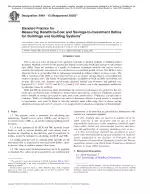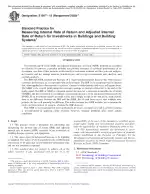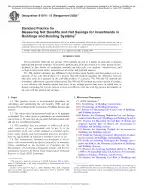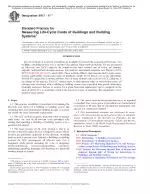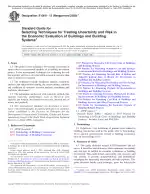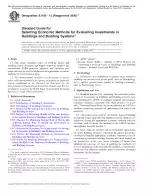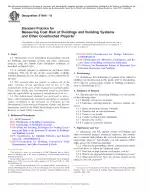ASTM E964-15 (R2020)e1 PDF Download
Standard EN SampleStandard Practice for Measuring Benefit-to-Cost and Savings-to-Investment Ratios for Buildings and Building Systems
Also Known As:
ASTM E964-15 (R2020)e1 is a standard practice that provides a procedure for calculating and interpreting benefit-to-cost ratios (BCR) and savings-to-investment ratios (SIR) in order to aid in making building-related decisions. It emphasizes the importance of considering both present and future benefits and costs in the decision-making process and includes these measurable values in the BCR and SIR calculations. The dollar amounts used in the calculations are all discounted, meaning they are expressed in time-equivalent dollars, either in present value or uniform annual value terms.
The BCR and SIR ratios provide a single number that indicates the economic performance of a proposed building or building system in comparison to a mutually exclusive alternative. Unlike the life-cycle cost (LCC) method, which requires two LCC measures for evaluation, the BCR and SIR provide a simpler and more comprehensive economic performance measure. These ratios can be used for various purposes, such as determining the economic viability of a building or building system compared to not having it, comparing the economic efficiency of different designs or sizes, and assisting in the selection of the most economically efficient set of projects when funding is limited.
| Descriptors | building systems, benefit-to-cost ratio, savings-to-investment ratio, ,Building Economics,Building Structures |
| ICS Codes | 91.010.20 - Contractual aspects |
| Language(s) | English |
| File Size | 174.1 KB |

